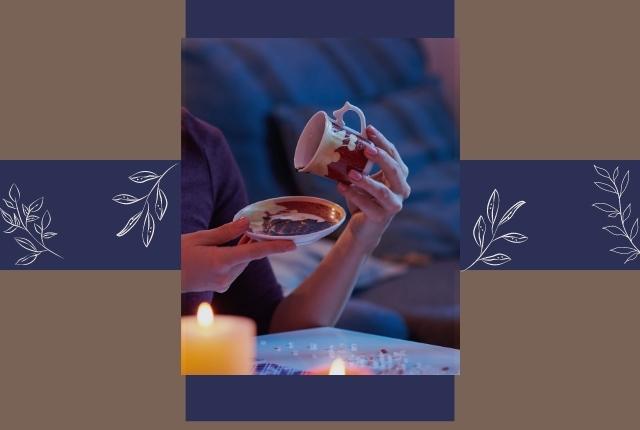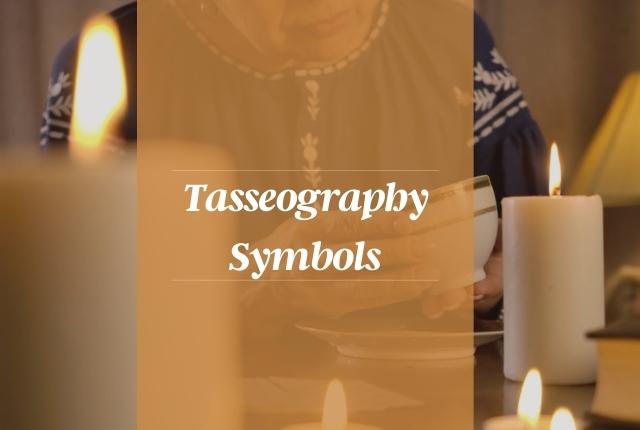When you’re sipping your morning tea or coffee, have you ever wondered what the leftover leaves or grounds might be trying to tell you? In the world of tasseography, or tea leaf and coffee reading, these remnants can hold fascinating insights. It’s like having a personal conversation with your cup!
Now, it’s crucial to remember that your unique question or wish is the key to unlocking the true meaning of each symbol. Just like in a heart-to-heart chat, context is everything. But don’t worry if you’re new to this. There are some general guidelines that can help you navigate the symbolic landscape of your teacup or coffee cup. So, let’s embark on this journey of discovery together, one sip at a time.
Meaning of Common Tasseography Symbols

- Aircraft (such as airplanes or balloons): unsuccessful projects
- Anchor: good luck in business and stable love life (Note: If this symbol is cloudy in appearance, it should be interpreted as the opposite.)
- Angel: good news, especially in love-related matters
- Apples: long life; success in school or business
- Arrows: bad messages or news from the direction in which the arrow points
- Axe: problems overcome
- Birds: good luck, possibly a good journey
- Boat: a visit from a friend
- Bouquet: very good luck, including good friends, success, and a happy love life
- Bridge: a good journey
- Butterfly: success and pleasure
- Candle: enlightenment
- Car: approaching wealth
- Castle: an unexpected fortune (monetary or otherwise)
- Circles: expect money or presents
- Clouds: serious troubles, unless surrounded by dots! (This means monetary success.)
- Clover: very good luck; happiness and prosperity
- Coffin: lengthy sickness or the death of a loved one
- Compasses: business travel
- Cow: prosperity
- Cross: trouble, delay or death
- Crown: success and honor
- Dagger: help from friends
- Dragon: large and sudden changes
- Eagle: honor and riches achieved through a change in housing
- Elephant: luck and good health
- Fish: good news from another country
- Fox: backstabbing from a close friend
- Goat: enemies
- Greyhound: hard work paying off with good fortune
- Gun: disharmony, slander
- Hammer: challenges overcome
- Hat: success in life
- Heart: good things to come, such as money (if surrounded by dots) or marriage (if with a ring)
- Horseshoe: success in choosing a partner; a lucky trip
- Hourglass: imminent danger
- House: business success
- Kettle: death
- Kite: a long trip leading to honor
- Knife: disaster met through fighting and hatred
- Ladder: travel
- Letter (square of rectangular leaves): news; initials nearby signify the bearer of the news; dots with the letter means money, but if the image of the dots is cloudy, it means loss of money
- Lines: journey, and the direction of the journey (when reading with nearby symbols); wavy lines mean difficult journeys; straight lines can also mean peace, happiness and a long life
- Moon: happiness and success; a crescent moon means prosperity
- Mountain: a powerful friend or, if many mountains, powerful enemies
- Mushroom: a sudden separation of lovers following a fight
- Owl: sickness, poverty, warning against starting a new business, deceit in love, and other unlucky events
- Pear: wealth, social status, possibly a financially beneficial business move or marriage
- People: symbol varies with what they are doing, but the symbol of people is usually good
- Pig: a faithful lover but jealous friends
- Pine tree: contentment
- Rabbit: success in a city
- Rat: losses through enemies or employees
- Reptiles: arguments
- Ring: marriage; if a letter is nearby, it is the initial of the future spouse; if the ring is at the bottom, it means the marriage will not take place; if the ring is surrounded by clouds, it signifies an unhappy marriage
- Saw: trouble from strangers
- Scales (old-fashioned, weight-measuring ones): a lawsuit
- Scissors: arguments; a break-up; illness
- Shark: danger of death
- Sheep: prosperity and success
- Ship: a successful journey
- Snakes: a bad omen; take caution!
- Squares: comfort and peace
- Star: good luck; if surrounded by dots, wealth, and honor
- Swan: good luck and a happy love life
- Sword: arguments, especially between lovers; a broken sword means an enemy will win
- Trees: good luck; prosperity and happiness; if surrounded by dots, fortune will be found in the country
- Triangles: good luck or an unexpected inheritance
- Umbrella: difficulty; annoyance
- Unicorn: scandal
- Wheel: inheritance
- Worms: secret enemies
What do the shapes in your coffee or tea cup tell you? See the meaning of dozens of symbols you may see in tasseography, coffee, or tea leaf reading.
Historical Context
Tasseography, also known as tasseomancy or tassology, is a divination or fortune-telling method that interprets patterns in tea leaves, coffee grounds, or wine sediments. The term derives from the French word ‘tasse’ (cup), which in turn comes from the Arabic word ‘tassa’ (cup), and the Greek suffixes ‘-graph’ (writing), ‘-mancy’ (divination), and ‘-logy’ (study).
The practice of tasseography originated in the Middle East, where it was common to read coffee grounds, and spread to Europe and the West with the introduction of tea from China. It became particularly popular in the 17th century when Dutch merchants introduced tea to Europe. As tea consumption increased, so did the practice of reading tea leaves.
In the Victorian era, tasseography became a popular pastime at parties. It was seen as a genteel way for ladies to engage in fortune-telling, which was otherwise frowned upon. Special teacups and saucers were even designed for this purpose, often featuring zodiac signs and other symbolic imagery to aid in interpretation.
Over time, tasseography has evolved and adapted to different cultures and practices. For instance, in Scotland and Ireland, it’s common to read tea leaves left in the bottom of a cup. In contrast, in the Middle East and Turkey, coffee grounds left on the inside of the cup are often used for divination.
